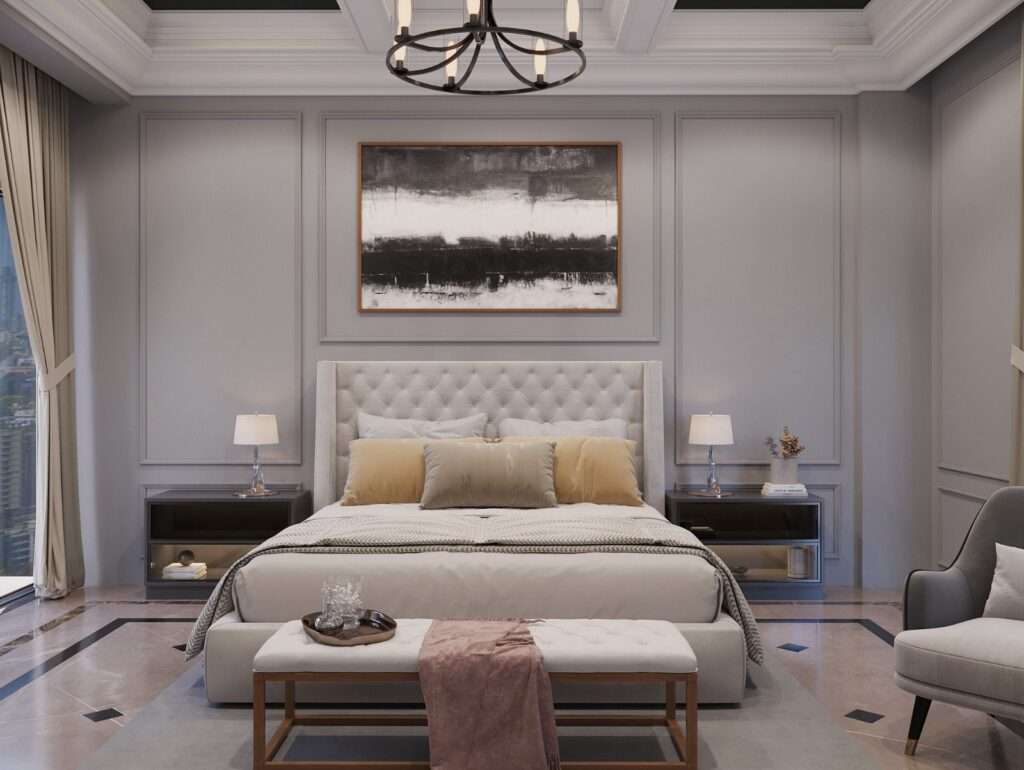In the dynamic realm of interior design, staying ahead of the curve is not just an option—it’s a necessity. As design preferences evolve and technology continues to redefine the industry, professionals are constantly seeking innovative ways to showcase their vision and engage clients effectively. One such revolutionary tool that has swiftly become a standard offering in the arsenal of interior designers is 3D rendered interior designs.
At Dkore Interiors, we understand the power and potential of 3D rendering in transforming the client experience and elevating the design process to new heights. Gone are the days of relying solely on 2D sketches or abstract descriptions to convey design concepts. Instead, we harness the capabilities of cutting-edge technology to create immersive and photorealistic representations of interior spaces, allowing clients to visualize their dream environments with unprecedented clarity and precision.
Key to the widespread adoption of 3D-rendered interior design is its ability to bridge the gap between imagination and reality. With intricate detail and lifelike textures, these renderings offer clients a comprehensive preview of the final outcome, enabling them to make informed decisions and provide valuable feedback at every stage of the design journey. Whether it’s exploring different color schemes, experimenting with furniture arrangements, or evaluating lighting options, 3D rendering empowers clients to actively participate in the design process, resulting in spaces that truly reflect their unique tastes and preferences.
Moreover, 3D rendered interior design serves as a powerful communication tool, fostering clear and effective collaboration between designers, clients, and other stakeholders involved in the project. By presenting a visually compelling representation of the proposed design, designers can convey their ideas more convincingly and address any concerns or uncertainties proactively. This transparent and iterative approach not only enhances client satisfaction but also minimizes the risk of misunderstandings or discrepancies during the execution phase, ultimately saving time, resources, and mitigating potential challenges.
Furthermore, in today’s digital age where online presence and visual storytelling are paramount, 3D rendered interior designs offers a competitive edge to design firms like Dkore Interiors. By showcasing our portfolio of stunning renderings across various digital platforms and social media channels, we can captivate potential clients, showcase our expertise, and differentiate ourselves in a crowded marketplace. From captivating Instagram posts to immersive virtual tours, these high-quality visuals enable us to captivate and inspire our audience, establishing trust and credibility in our brand.
Incorporating 3D rendered interior design into our service offerings not only enhances the client experience but also streamlines our internal processes and enhances productivity. By leveraging advanced software tools and technologies, our designers can iterate rapidly, explore multiple design options, and fine-tune every detail with precision and efficiency. This iterative approach not only fosters creativity but also enables us to deliver projects on time and within budget, meeting and exceeding the expectations of our clients consistently.
Conclusion,
The adoption of 3D rendered interior design is no longer a luxury but a necessity in today’s design landscape. By offering clients a tangible and immersive preview of their future spaces, designers can enhance communication, foster collaboration, and elevate the overall design experience. At Dkore Interiors, we are committed to harnessing the power of 3D rendering to create spaces that inspire, delight, and exceed expectations. Join us on this journey as we redefine the possibilities of interior design, one rendering at a time.
FAQ
What is 3D-rendered interior design, and how does it differ from traditional design methods?
3D-rendered interior design involves creating highly realistic, three-dimensional representations of interior spaces using advanced software and rendering techniques. Unlike traditional methods such as 2D sketches or mood boards, 3D rendering allows clients to visualize their spaces with lifelike detail, including textures, lighting, and spatial arrangements. This immersive approach enables clients to explore different design options and make informed decisions with confidence.
What are the benefits of using 3D-rendered interior design?
The benefits of 3D rendering are manifold. Firstly, it provides clients with a clear and accurate depiction of the proposed design, helping to eliminate misunderstandings and uncertainties. Additionally, 3D rendering facilitates better communication and collaboration between designers and clients, enabling real-time feedback and adjustments. Moreover, 3D renderings can be used to showcase design concepts across various digital platforms, enhancing marketing efforts and attracting potential clients.
How does the process of creating 3D renderings work?
The process typically begins with gathering information about the client’s preferences, requirements, and project scope. From there, our team of experienced designers uses specialized software to model the interior space and add details such as furniture, fixtures, and finishes. Lighting and textures are then applied to enhance realism, followed by rendering to produce high-quality images or animations. Throughout the process, clients are encouraged to provide feedback and make revisions as needed.
Can 3D rendered interior designs be customized to suit my specific project requirements?
A: Absolutely! One of the key advantages of 3D rendering is its flexibility and versatility. Whether you’re renovating a residential space, designing a commercial office, or planning a hospitality project, 3D rendering can be tailored to meet your unique needs and preferences. From color schemes and furniture selections to layout options and architectural details, the possibilities are virtually endless.
How does 3D rendered interior design contribute to the overall success of a project?
By offering clients a realistic preview of their future spaces, 3D rendering helps to align expectations, minimize revisions, and streamline the design process. This proactive approach not only saves time and resources but also enhances client satisfaction and confidence in the final outcome. Moreover, 3D renderings can be used to secure approvals, attract investors, and market the project to potential buyers or tenants, ultimately contributing to its overall success and profitability.
